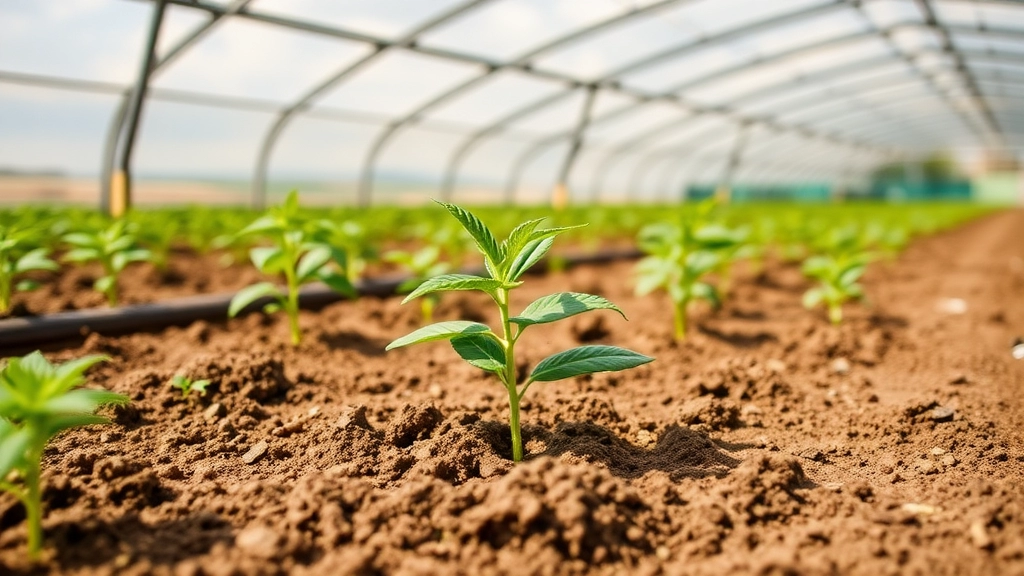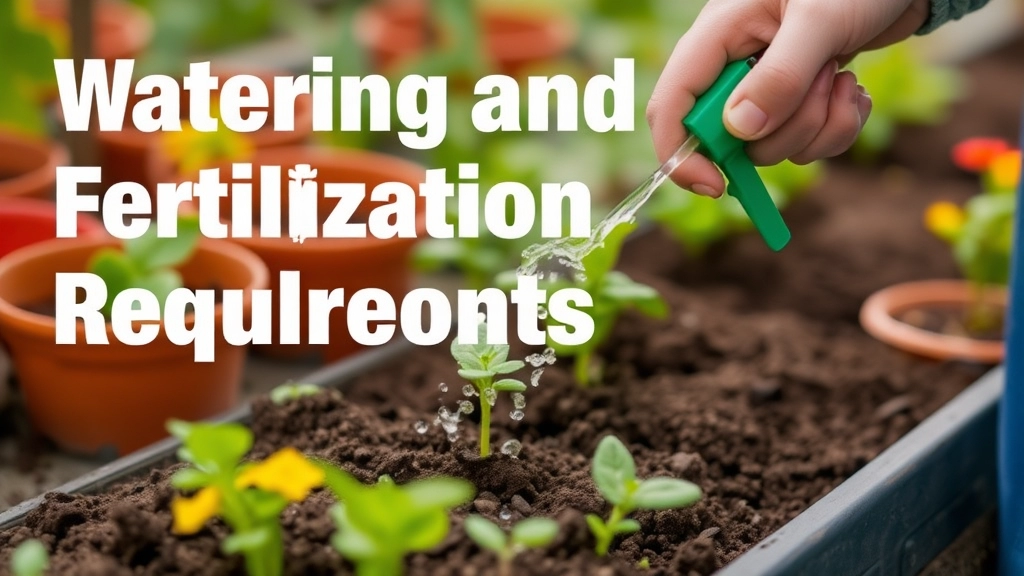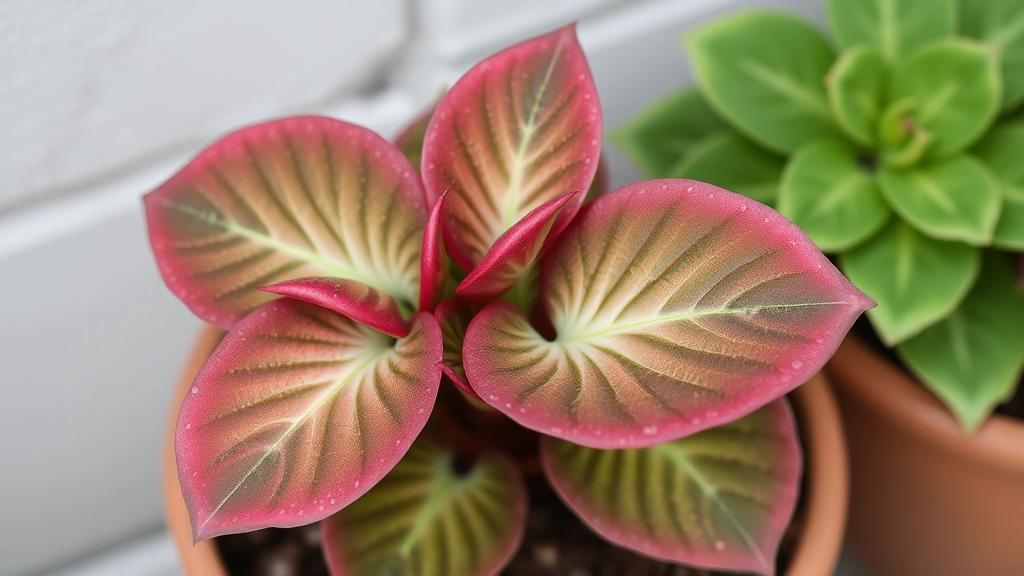Welcome to the fascinating world of Kalanchoe beharensis
This remarkable succulent is a true showstopper in any plant collection, boasting massive, velvety leaves that feel like suede and a striking silvery-green color that catches the eye. As we dive into the care and cultivation of this unique plant, you’ll discover why it’s become a favorite among plant enthusiasts and gardeners alike.
In this comprehensive guide, we’ll explore everything from ideal growing conditions and propagation techniques to common pests and diseases. Whether you’re a seasoned plant parent or just starting your green journey, you’ll find valuable insights on nurturing your Kalanchoe beharensis to its full potential. Get ready to uncover the secrets of this drought-resistant, low-maintenance beauty that can thrive both indoors and out.
Description and Characteristics of Kalanchoe Beharensis
Alright, let’s dive into the world of Kalanchoe Beharensis. This plant’s a real head-turner.
What’s the deal with Kalanchoe Beharensis?
It’s a succulent that’s hard to miss. Picture this:
- Massive, velvety leaves that feel like suede
- A silvery-green colour that catches the light
- Can grow up to 6 feet tall (yeah, it’s a big boy)
Why’s it called the Elephant’s Ear Plant?
Simple. Those leaves are huge and shaped like, you guessed it, elephant ears.
But here’s the kicker:
It’s not just about looks. This plant’s tough as nails.
Drought-resistant? Check.
Low maintenance? Double-check.
Now, you might be thinking, “Sounds great, but can I grow it?”
Good news: It’s pretty adaptable.
Whether you’re in a warm outdoor spot or rocking an indoor garden, Kalanchoe Beharensis can thrive.
Just remember:
- It loves sun (but can handle some shade)
- Doesn’t need much water
- Prefers well-draining soil
Here’s a cool fact:
In its native Madagascar, it’s used for medicinal purposes. Talk about a plant with perks!
Bottom line: Kalanchoe Beharensis is a stunner that’s easy to care for. Whether you’re a plant pro or just starting out, this one’s worth a shot.
Ideal Growing Conditions

Let’s chat about the perfect setup for your Kalanchoe beharensis, or as I like to call it, the “Velvet Elephant Ear.” Trust me, getting these conditions right is like giving your plant a first-class ticket to Thriving Town.
Sunlight: The Sweet Spot
These guys are sun worshippers, but they’re not beach bums. Here’s the deal:
- Bright, indirect light is their jam
- Morning sun? Awesome. Harsh afternoon rays? Not so much
- If you’re growing indoors, a south-facing window is your best bet
Temperature: Keeping It Cosy
Kalanchoe beharensis isn’t into extreme weather. Think Goldilocks – not too hot, not too cold.
- Ideal range: 15-24°C (60-75°F)
- Can handle brief dips to 10°C (50°F), but don’t push it
- Avoid frost at all costs – these plants are proper softies when it comes to cold
Soil: The Foundation of Success
Here’s where things get a bit picky. Your Velvet Elephant Ear needs:
- Well-draining soil – we’re talking cactus mix territory
- Add some perlite or coarse sand to improve drainage
- Aim for a slightly acidic to neutral pH (6.0-7.0)
Humidity: Not a Deal-Breaker
Good news! These plants aren’t humidity divas. They’re pretty chill about it:
- Average room humidity is fine
- If you live somewhere super dry, a light misting now and then won’t hurt
Space: Room to Grow
These aren’t your average houseplants. They can get big – we’re talking up to 3 meters (10 feet) in the right conditions. So:
- Give them space to spread their leaves
- If you’re growing indoors, consider a spot with high ceilings
Remember, nailing these conditions isn’t just about keeping your Kalanchoe beharensis alive – it’s about helping it thrive. Get these right, and you’ll have a stunning, velvety showstopper that’ll make your plant-loving mates proper jealous. If you’re interested in other unique Kalanchoe varieties, check out the Kalanchoe beharensis ‘Snowflake’ for a fascinating twist on this species.
Planting and Propagation Techniques
Alright, let’s dive into planting and propagating Kalanchoe beharensis. This is where the fun begins!
Planting Kalanchoe Beharensis: The Basics
Ever wondered how to get these funky plants going? It’s easier than you might think.
First things first, choose a spot with bright, indirect light. These guys love the sun but can’t handle too much direct heat.
Soil’s crucial. Go for a well-draining mix. I usually throw in some perlite or sand to keep things airy.
Now, here’s a pro tip: don’t plant too deep. Just nestle the roots in and you’re good to go.
Propagation: Spreading the Love
Want more Kalanchoe beharensis? No sweat. There are a couple of ways to make it happen:
Leaf Cuttings:
- Snip a healthy leaf
- Let it dry for a day or two
- Stick it in some soil
- Wait for roots to form
Stem Cuttings:
- Cut a stem about 4-6 inches long
- Remove lower leaves
- Let it callous over
- Plant in moist soil
Here’s the kicker: patience is key. These plants take their sweet time to root.
Common Propagation Mistakes to Avoid
I’ve seen folks mess this up. Don’t be that person.
- Overwatering: It’s tempting, but resist!
- Using regular potting soil: Too heavy, mate
- Forgetting to sterilize tools: Hello, plant diseases
Remember, Kalanchoe beharensis isn’t your average houseplant. It’s got attitude.
Treat it right, and you’ll have a stunning, elephant-ear-like beauty in no time.
So, ready to get your hands dirty with some Kalanchoe beharensis planting and propagation?
Watering and Fertilization Requirements

Let’s chat about keeping your Kalanchoe beharensis happy and thriving, shall we? Water and food are key, but it’s not as simple as just dumping a bucket on it every day. Here’s the lowdown:
Watering Wisdom
First things first, these succulents are drought-tolerant champs. They’re not fans of soggy feet, so let’s avoid overwatering:
- Water deeply but infrequently
- Allow the soil to dry out between waterings
- Cut back on water during winter months
Pro tip: Stick your finger about an inch into the soil. If it’s dry, it’s watering time. If it’s still moist, hold off.
Feeding Frenzy
Now, onto fertilizer. Kalanchoe beharensis isn’t a heavy feeder, but a little boost now and then doesn’t hurt:
- Use a balanced, water-soluble fertilizer
- Feed during the growing season (spring and summer)
- Dilute the fertilizer to half-strength
Here’s a quick and dirty schedule:
- Spring/Summer: Feed every 4-6 weeks
- Fall/Winter: Hold off on fertilizer
Common Mistakes to Avoid
- Overwatering: It’s the number one killer. When in doubt, err on the dry side.
- Using the wrong fertilizer: Stick to balanced, low-nitrogen options.
- Forgetting to adjust for seasons: Less water and no fertilizer in winter, folks!
Remember, Kalanchoe beharensis is a tough cookie. It’s better to underwater than overwater. If you’re unsure, just wait an extra day or two before reaching for that watering can.
By nailing these watering and fertilization requirements, you’ll be well on your way to a thriving Kalanchoe beharensis. It’s all about finding that sweet spot â not too much, not too little. Just right. For more tips on caring for other varieties, check out our guide on Kalanchoe tomentosa varieties.
Common Pests and Diseases
Let’s chat about the baddies that might mess with your Kalanchoe beharensis, shall we?
Pests: The Usual Suspects
- Mealybugs: These little cotton-ball lookalikes love to party on your plant.
- Spider mites: Tiny troublemakers that can spin webs and suck the life out of your leaves.
- Scale insects: Small, armoured pests that stick to stems and leaves like they’re superglued.
- Aphids: Green or black bugs that multiply faster than you can say “Kalanchoe”.
Diseases: The Sneaky Culprits
- Root rot: Too much water? Your roots might start to rot. Not cool.
- Powdery mildew: Looks like someone dusted your plant with flour. Ugh.
- Leaf spot: Brown or black spots on leaves. Bit of a eyesore, really.
How to Keep Your Kalanchoe Beharensis Happy and Healthy
- Check your plant regularly. Catch problems early, sort ’em out quick.
- Good air circulation is key. Don’t let your plant feel suffocated.
- Water at the base, not on leaves. Wet leaves = fungal party.
- Use neem oil or insecticidal soap for pests. Natural and effective.
- If you spot diseased bits, chop ’em off. Better safe than sorry.
Remember, a healthy Kalanchoe beharensis is less likely to attract pests or diseases.
Keep it in tip-top shape, and you’ll have fewer headaches down the road.
Kalanchoe beharensis is a fascinating plant that requires some specific care. If you’re interested in learning more about this unique succulent, you might want to check out our detailed guide on Kalanchoe beharensis.
When it comes to pruning and maintenance, it’s important to use the right techniques to keep your plant healthy and thriving. Regular pruning not only keeps your plant in shape but also boosts growth and prevents it from becoming too leggy. Spring is generally the best time to prune, as the plant is entering its active growth phase.
For those new to Kalanchoe care, you might find it helpful to explore other varieties as well. The Kalanchoe tomentosa varieties are particularly interesting and share some similar care requirements. Understanding the needs of different Kalanchoe species can enhance your overall succulent care skills.
Remember, while pruning is important, don’t go overboard. Kalanchoe beharensis is relatively low-maintenance and doesn’t need constant attention. Regular dusting of its large, fuzzy leaves, providing support for larger plants, and occasional repotting are key aspects of its care routine. With these simple maintenance tips, you’ll be able to keep your Kalanchoe beharensis looking its best for years to come.
Benefits and Uses in Landscaping
Kalanchoe beharensis is a game-changer in landscaping. Trust me, I’ve seen it work wonders.
Here’s why it’s a top pick:
- Drought-tolerant: Perfect for low-water gardens
- Unique texture: Those fuzzy leaves add serious interest
- Low maintenance: Ideal for busy folks or newbie gardeners
- Architectural appeal: Creates stunning focal points
How I’ve used it:
- As a standout specimen plant
- In rock gardens for that desert vibe
- Mixed with succulents for a textural playground
- Container planting for patios and balconies
Pro tip: Pair it with plants with contrasting foliage for a real eye-catcher.
Remember, this plant’s not just pretty – it’s practical too.
It’s great for:
- Erosion control on slopes
- Creating natural privacy screens
- Adding year-round interest to your garden
Bonus: It’s pet-friendly, so no worries if Fido decides to investigate.
Bottom line: Kalanchoe beharensis is a versatile powerhouse in landscaping. It’s tough, looks great, and offers loads of design possibilities. What’s not to love?
Troubleshooting Common Issues

Let’s face it, even the toughest plants can hit a rough patch. Kalanchoe beharensis is no exception. Here’s how to tackle some common hiccups you might run into:
Yellowing Leaves: What’s the Deal?
Ever walked up to your Kalanchoe and thought, “Why’s it looking a bit yellow?” Here’s the scoop:
- Overwatering: These succulents hate wet feet. Ease up on the H2O.
- Nutrient deficiency: Maybe it’s time for a snack. Try a balanced fertiliser.
- Too much sun: Yep, even sun-lovers can get a bit crispy. Move it to a shadier spot.
Droopy Leaves: The Sad Plant Syndrome
If your Kalanchoe’s looking a bit down in the dumps:
- Underwatering: Give it a good drink, but don’t go overboard.
- Temperature shock: These guys like it warm. Keep them away from cold drafts.
Slow Growth: Why’s My Plant Being Lazy?
- Not enough light: Kalanchoes love bright, indirect light. Find a sunnier spot.
- Poor soil: They’re not fussy, but they do like well-draining soil. Maybe it’s time for a repot?
Pest Problems: Uninvited Guests
Spotted some creepy crawlies? Here’s what to do:
- Mealybugs: Dab them with alcohol on a cotton swab.
- Spider mites: A good shower and some neem oil should do the trick.
Remember, most issues come down to water, light, or soil. Get those right, and you’re golden. And if all else fails? Don’t be afraid to start over with a cutting. These plants are tough cookies and will bounce back before you know it.
Got any Kalanchoe blossfeldiana troubles I haven’t covered? Drop me a line, and let’s figure it out together. After all, plant parenting is a team sport!
Seasonal Care and Indoor Growing Tips
Hey there, fellow Kalanchoe Beharensis enthusiasts!
Let’s chat about keeping these beauties thriving year-round, shall we?
Seasonal Care:
Spring and Summer:
- These are your plant’s party seasons
- Give it plenty of bright, indirect light
- Water more frequently, but let the soil dry between drinks
- Feed it with a balanced fertiliser every month
Autumn and Winter:
- Time to ease off a bit
- Reduce watering – these guys are drought-tolerant
- Skip the fertiliser – your plant’s taking a breather
- Keep an eye out for cold drafts – they’re not fans
Indoor Growing Tips:
Light:
- Bright, indirect light is the sweet spot
- A south-facing window with a sheer curtain? Perfect!
Temperature:
- They like it warm – think 15-24°C (59-75°F)
- Avoid sudden temperature changes
Humidity:
- Not fussy, but they appreciate a bit of moisture in the air
- Mist occasionally or use a pebble tray if your home’s dry
Pot and Soil:
- Well-draining soil is a must
- Choose a pot with drainage holes
Remember, Kalanchoe Beharensis is pretty chill indoors. Just give it some TLC, and you’ll have a happy plant all year round.
Got any indoor growing hacks for these fellas? Drop ’em in the comments!
Where to Buy Kalanchoe Beharensis
Alright, let’s chat about where you can snag a Kalanchoe Beharensis for your green space. Trust me, I’ve been down this road, and I’ll share some insider tips to make your plant hunt a breeze.
Local Nurseries: Your First Stop
I always start with local nurseries. Why? Because you can see the plant in person, check its health, and get some face-to-face advice. Plus, you’re supporting local businesses – win-win!
Online Plant Shops: The Convenience King
Can’t find it locally? No worries! Online plant shops are your next best bet. Here are some top picks:
- Etsy: Yep, it’s not just for crafts! Loads of small growers sell Kalanchoe Beharensis here.
- Amazon: The everything store has plants too. Just read those reviews carefully!
- Speciality Plant Websites: Places like Succulents Box or Mountain Crest Gardens often stock these beauties.
Social Media Marketplaces: The Hidden Gem
Don’t overlook Facebook Marketplace or Instagram plant swap groups. I’ve scored some amazing deals this way. Just be sure to check the seller’s reputation first.
Botanical Gardens: The Unexpected Source
Here’s a pro tip: Some botanical gardens have plant sales or can point you to reliable sources. It’s worth a shot, and you might discover other cool plants while you’re there!
Word of Caution
Remember, Kalanchoe Beharensis isn’t the most common houseplant. You might need to be patient or willing to have it shipped. But trust me, it’s worth the wait!
Where to Buy Kalanchoe Beharensis: The Bottom Line
Whether you’re hitting up local nurseries, scrolling through online shops, or networking in plant communities, finding your Kalanchoe Beharensis is totally doable. Just keep your eyes peeled and don’t be afraid to ask around. Happy plant hunting!
FAQs about Kalanchoe Beharensis (Velvet Elephant Ear)
What makes Kalanchoe Beharensis unique?
Kalanchoe Beharensis, also known as Velvet Elephant Ear, stands out due to its large, velvety leaves that resemble elephant ears. It can grow up to 6 feet tall and has a striking silvery-green color that catches the light.
How often should I water my Kalanchoe Beharensis?
These plants are drought-resistant and prefer infrequent watering. Allow the soil to dry out completely between waterings. In winter, reduce watering even further. Remember, overwatering is more harmful than underwatering for this plant.
Can I grow Kalanchoe Beharensis indoors?
Yes, Kalanchoe Beharensis can thrive indoors with the right conditions. Place it near a south-facing window for bright, indirect light. Ensure good air circulation and maintain temperatures between 15-24°C (60-75°F).
What type of soil is best for Kalanchoe Beharensis?
Use a well-draining soil mix, similar to what you’d use for cacti or succulents. Adding perlite or coarse sand to regular potting soil can improve drainage. Aim for a slightly acidic to neutral pH (6.0-7.0).
How do I propagate Kalanchoe Beharensis?
You can propagate this plant through leaf or stem cuttings. For leaf cuttings, allow the cut end to callous over before planting. For stem cuttings, remove lower leaves, let it dry for a day or two, then plant in moist soil. Patience is key, as these plants can take time to root.
Is Kalanchoe Beharensis toxic to pets?
While Kalanchoe Beharensis is generally considered pet-friendly, it’s always best to keep plants out of reach of curious pets. Some Kalanchoe species can be toxic, so it’s better to err on the side of caution.
How can I use Kalanchoe Beharensis in landscaping?
This plant is versatile in landscaping. It works well as a focal point, in rock gardens, mixed with other succulents, or in container plantings. It’s also effective for erosion control on slopes and can create natural privacy screens.
What are common pests that affect Kalanchoe Beharensis?
Mealybugs, spider mites, scale insects, and aphids can sometimes infest these plants. Regular inspection and prompt treatment with neem oil or insecticidal soap can keep these pests at bay.
How often should I fertilize my Kalanchoe Beharensis?
Fertilize during the growing season (spring and summer) every 4-6 weeks with a balanced, water-soluble fertilizer diluted to half strength. Avoid fertilizing in fall and winter when the plant’s growth slows down.
Can Kalanchoe Beharensis tolerate cold temperatures?
While it can handle brief dips to 10°C (50°F), Kalanchoe Beharensis prefers warmer temperatures. It’s not frost-hardy, so protect it from cold drafts and freezing temperatures.
References
-
Missouri Botanical Garden – Kalanchoe beharensis Plant Finder: Kalanchoe beharensis
-
University of Florida IFAS Extension – Kalanchoe beharensis Kalanchoe beharensis Velvet Leaf

